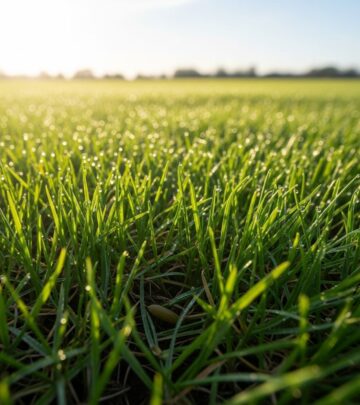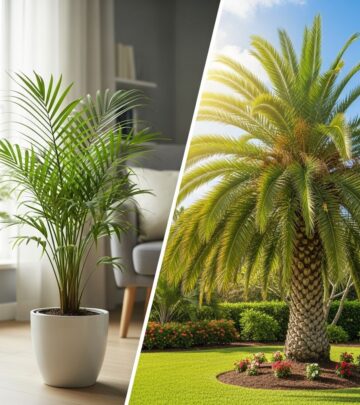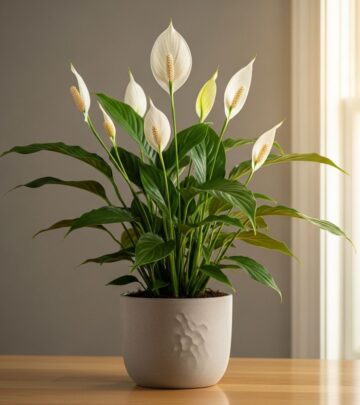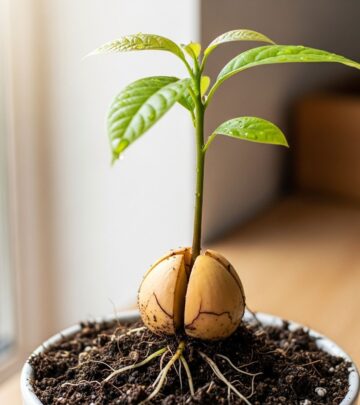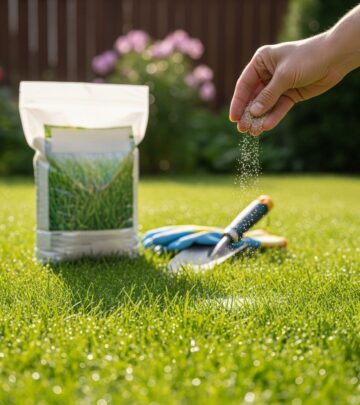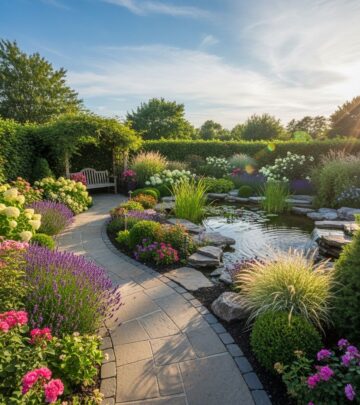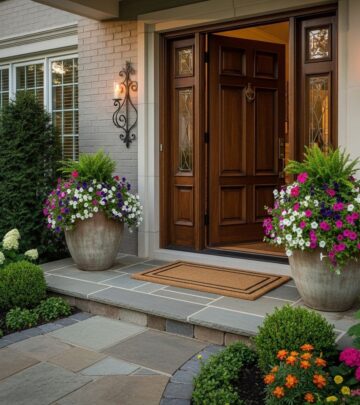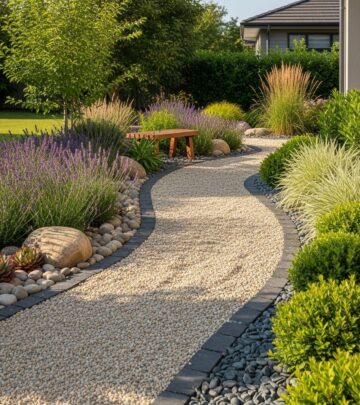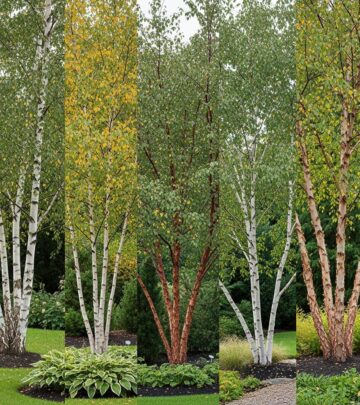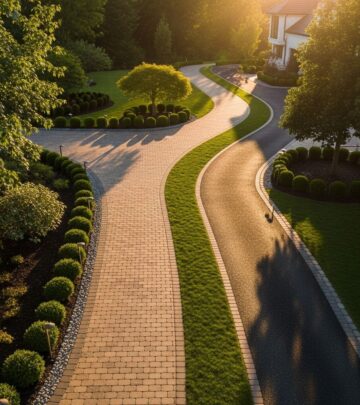Hardscaping 101: Metal Landscape Edging—Pros, Cons, and Design Essentials
Create garden borders that withstand time and tools while staying seamlessly subtle.
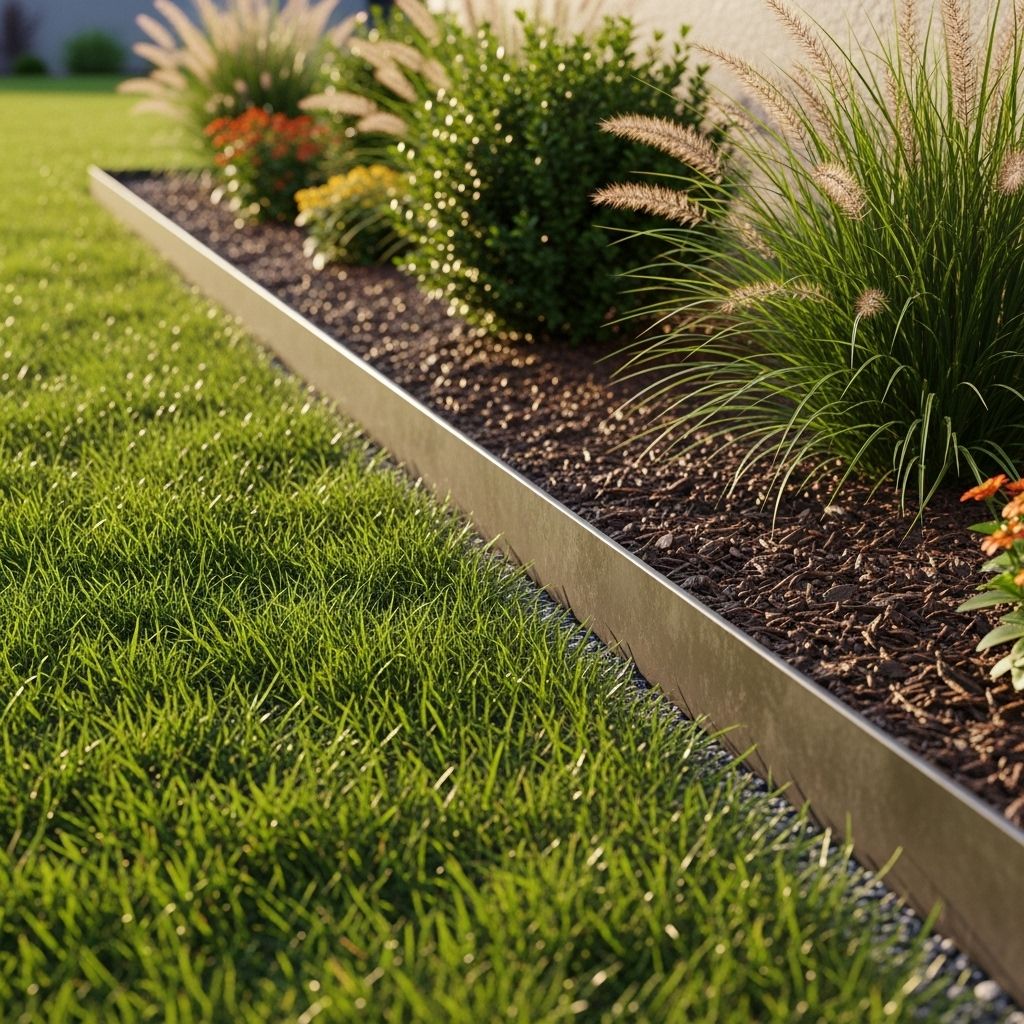
Image: HearthJunction Design Team
Hardscaping 101: Metal Landscape Edging — Pros, Cons, and Modern Uses
In contemporary landscape design, metal landscape edging has earned a reputation as a reliable, understated workhorse. While it rarely commands the spotlight, its simple functionality can vastly improve both the everyday look and durability of a garden or outdoor space. This guide explores the core advantages and potential drawbacks of metal edging, offering practical advice and inspiration for homeowners and landscapers alike.
What is Metal Landscape Edging?
Metal landscape edging is a hardscaping element typically fashioned from steel or aluminum. Installed flush with the ground, it separates distinct areas—such as lawns, planting beds, driveways, and paths—while lending a crisp, clean visual boundary. Metal edging is particularly prized for its ability to blend into various garden styles while performing essential structural tasks beneath the surface.
Common Materials Used
- Steel: Available in various finishes (galvanized, weathered, powder coated)
- Aluminum: Lightweight, doesn’t rust, and often comes with a brushed or painted finish
- Corten/Weathering Steel: Develops a rich rust-like patina, blending beautifully into naturalistic garden palettes
Benefits of Metal Landscape Edging
- Crisp separation: Delineates lawns, garden beds, paths, and driveways with little space and minimal visual distraction.
- Material containment: Prevents gravel, mulch, and soil from migrating across beds or onto paths.
- Grass barrier: Especially effective at stopping lawn grass from creeping into beds or walkways.
- Weather resistance: Unlike wood or composite materials, metal edging resists rotting, cracking, chipping, or brittleness from cold weather.
- Ground stability: Stays put and resists being pushed out by frost heave or flooding—a common problem for lighter or bulkier materials.
- Tool proof: Withstands strikes from string trimmers, mowers, and other maintenance tools.
- Low profile: Its simple shape offers a clean, unobtrusive appearance, integrating with modern, cottage, or minimalist garden styles.
Key Applications of Metal Edging
- Planting beds: Frames and contains ornamental or productive crops
- Pathways and stepping stone lines: Maintains material separation between stone, gravel, and surrounding plantings
- Driveway margins: Prevents decomposed granite or gravel from washing away, maintaining neat vehicle access
- Geometric garden layouts: Supports modern, structured planting themes by providing strong, straight lines or precise curves
Case Study: A Modern Brooklyn Garden
Designers at Foras Studio used metal landscape edging to reinforce geometric planting beds and pathways in a compact Brooklyn backyard, achieving order and elegance with a minimal footprint. This approach demonstrates how metal edging can help shape contemporary garden aesthetics on a budget while remaining nearly invisible.
Metal Landscape Edging Recap: Pros and Cons
| Pros | Cons |
|---|---|
|
To create a sustainable garden, it's crucial to understand the basics. Our guide on building a timeless garden: foundations and hardscaping essentials outlines everything you need to lay a strong foundation for your outdoor space, ensuring long-term durability. |
How Does Metal Edging Compare to Other Materials?
| Material | Durability | Ease of Install | Maintenance | Appearance |
|---|---|---|---|---|
| Metal (Steel/Aluminum) | High | Moderate-Easy | Low | Minimalist, modern |
| Plastic | Low-Moderate | Easy | Moderate | More visible, may degrade in UV |
| Wood | Low | Easy | High (prone to rot, pests) | Rustic, can be decorative |
| Stone/Brick | High (if installed well) | Difficult | Low | Natural, often a focal point |
Choosing the Right Metal and Finish
- Galvanized steel: Best for those seeking longevity and a silver-grey appearance; resists rust for decades.
- Weathering steel: Intentionally develops a rusty patina that blends into naturalistic or meadow gardens.
- Aluminum: Resists corrosion, lightweight, and won’t develop rust, suiting both traditional and contemporary gardens.
Designers recommend considering the evolving look of metal edging over time. Some homeowners prefer the warm, earthy tones of weathered steel, while others want a neutral or polished finish that remains unchanged season after season.
Installation: How Difficult Is It to Install Metal Edging?
Part of metal edging’s appeal lies in its relative ease of installation for both professionals and skilled DIYers. Here’s what to keep in mind:
- Most products come in manageable lengths (4–8 feet) with interlocking or overlapping ends.
- Basic installation requires digging a narrow trench along the desired line, laying the edging, and securing it with included stakes or pins.
- Bending or shaping around curves is possible with thinner or special flexible edging types.
- Heavy-duty or thicker-gauge steel is best left to professionals due to the strength and tools required.
Tips for Best Results
- Set the top edge just above ground level for a seamless, “invisible” boundary.
- Use stakes every 3–4 feet for stability, especially in loose soils.
- Consider soil movement and drainage when positioning edging around beds susceptible to flooding or erosion.
- For sharp corners, select pre-formed corner pieces or carefully bend sections as needed.
Maintenance and Longevity
- Most metal edging is designed to be maintenance free.
- To extend life, opt for powder-coated or galvanized finishes in wet climates.
- Check yearly for signs of corrosion or deformation at joins, especially in regions with heavy frost or ground movement.
- Should edging shift, most systems can be carefully reset without removing the entire line.
Who Should Choose Metal Edging?
Metal edging is ideal for you if you:
- Prefer a minimalist, clean look over decorative garden borders
- Require durable, long-term solutions for material separation—especially in modern, geometric, or functional gardens
- Want a product that is virtually maintenance free
- Are willing to pay slightly more up front for improved longevity
Caution: Very young children may be at risk if the exposed edge is not flush with the ground. Select designs with softened edges where safety is a concern.
Design Inspirations
- Modern courtyards: Use sleek galvanized steel for understated border lines.
- Natural meadows: Rusted corten steel blends seamlessly with native plantings.
- Formal gardens: Flexible metal can help shape symmetrical borders and parterres.
Related Hardscape Options
- Concrete pavers: For paths and patios with tidy, geometric edges
- Seashell paths: Coastal charm, paired with understated steel edging
- Pea gravel and decomposed granite: These materials both pair well with thin metal boundaries to prevent migration
For further inspiration, designers often consult design guides and previous case studies for materials ranging from ribbon driveways to creative patterns in hardscape surfaces.
Frequently Asked Questions (FAQs)
Q: How long does metal landscape edging last?
A: High-quality galvanised or weathering steel products can last several decades with minimal maintenance, especially if installed properly. Aluminum, which doesn’t rust, can last even longer in ideal conditions.
Q: Will metal edging rust or corrode?
A: Untreated steel will develop a rust patina by design (as with corten) or over time, which some homeowners appreciate for its color and texture. Aluminum and galvanized finishes resist rust and are suitable if you want to avoid patina.
Q: Is metal edging safe for family gardens?
A: When installed with the top edge level to or just above the soil surface, metal edging is safe for general use. However, consider rounded or capped profiles in play areas to minimize scrape risks for young children or pets.
Q: Can I install metal landscape edging myself?
A: Many metal edging products are designed for DIY installation, though tools and strength may be required for tougher steel. Always follow the manufacturer’s instructions for best results, particularly with complex curves or corners.
Q: Is metal edging worth the investment compared to wood or plastic?
A: While metal tends to have a higher initial cost than wood or plastic, its longevity, resilience, and low maintenance often make it more cost-effective over time—especially in demanding climates or high-traffic areas.
Join the Conversation
Do you have a question or insight about metal landscape edging? Share your experience or ask for advice below!
References
- https://www.gardenista.com/posts/hardscaping-101-metal-landscape-edging-pros-and-cons/
- https://www.rpsmetalroofing.com/metal-landscape-edging-what-it-is-and-pros-and-cons/
- https://artificiallawn.co.uk/latest-news/metal-vs-plastic-lawn-edging/
- https://colmet.com/blog/which-landscape-edging-is-best
- https://edgeright.com/blogs/edge-right-blog/everything-you-need-to-know-about-landscape-edging-options
Read full bio of medha deb

